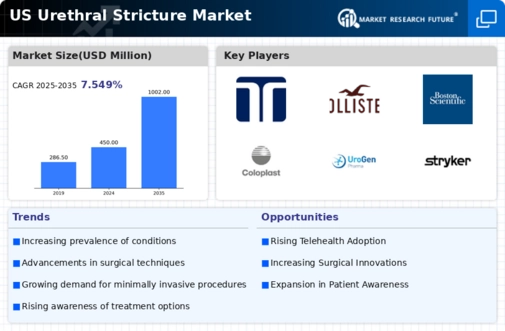The US Urethral Stricture Market is a dynamic landscape characterized by a range of competitive players striving to secure their positioning within this specialized sector. Urethral strictures are a significant medical concern, often necessitating intervention through surgical or non-surgical means. The market features a blend of established companies and emerging firms, each bringing unique technologies and solutions to address this condition. With an increasing prevalence of urethral strictures due to factors such as trauma, infections, and previous surgeries, the demand for effective treatment options is rising.
As a result, companies are focusing on innovation, product development, and strategic alliances to enhance their service offerings and expand their reach within the US market.
Teleflex
Teleflex holds a prominent position in the US Urethral Stricture Market, primarily recognized for its robust product portfolio and commitment to advancing healthcare solutions. The company has strategically invested in research and development to enhance its offerings, focusing on devices and supplies that facilitate procedures related to urethral strictures. Teleflex's strengths lie in its reputation for quality and innovation, which resonate well with healthcare providers seeking reliable and effective solutions for their patients.
The company benefits from a well-established distribution network and a strong brand image, aiding in the penetration of its products within the prestigious healthcare facilities across the United States. Furthermore, a commitment to continuous improvement and an extensive range of products tailored to various patient needs solidifies Teleflex’s competitive edge in this market.
Hollister
Hollister is another significant player within the US Urethral Stricture Market, known for its innovative approach to healthcare solutions. The company specializes in a variety of products including urinary management supplies, particularly catheters and related devices designed for urethral stricture management. Hollister prioritizes patient safety and comfort, which is pivotal in their product designs.
The organization's strengths are amplified by effective marketing strategies and a strong customer base rooted in both patients and healthcare providers who trust Hollister products due to their high quality and efficiency. Strategic mergers and acquisitions have further bolstered Hollister's capabilities, allowing them to enhance their technological advancements and expand their market presence. The company’s ongoing investment in product development and independence in innovation positions it as a formidable competitor in the US Urethral Stricture Market while maintaining a strong commitment to addressing the needs of patients and clinicians alike.










